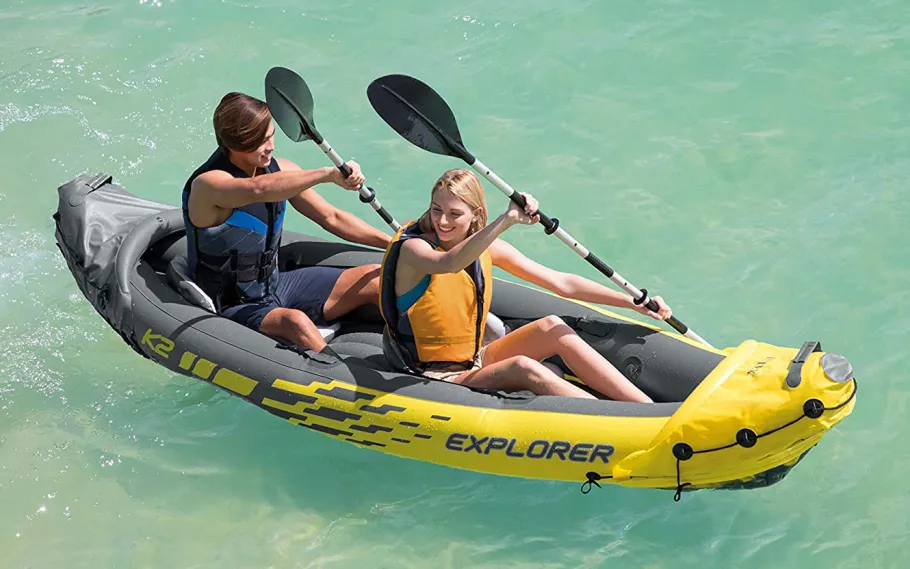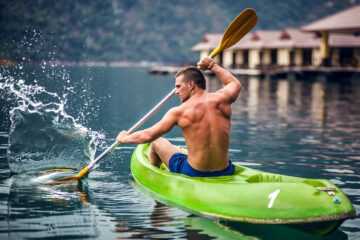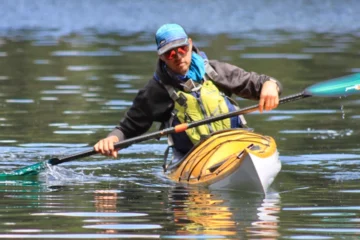Can 1 person use a 2 person inflatable kayak? The answer is, Yes, one person can use a two-person inflatable kayak, but there are several important considerations to keep in mind. While it’s possible to paddle a tandem inflatable kayak solo, you’ll need to adjust the seating position, distribute weight properly, and potentially use a rudder or skeg for better control.
Find out how to make the most of solo paddling in a two-person kayak and explore the pros and cons in the full article.
Key Takeaways:
- Adjust seating and balance weight for solo paddling in a two-person kayak.
- Always wear a life jacket and inform someone of your trip.
- Enjoy the freedom and skill-building, despite potential challenges.
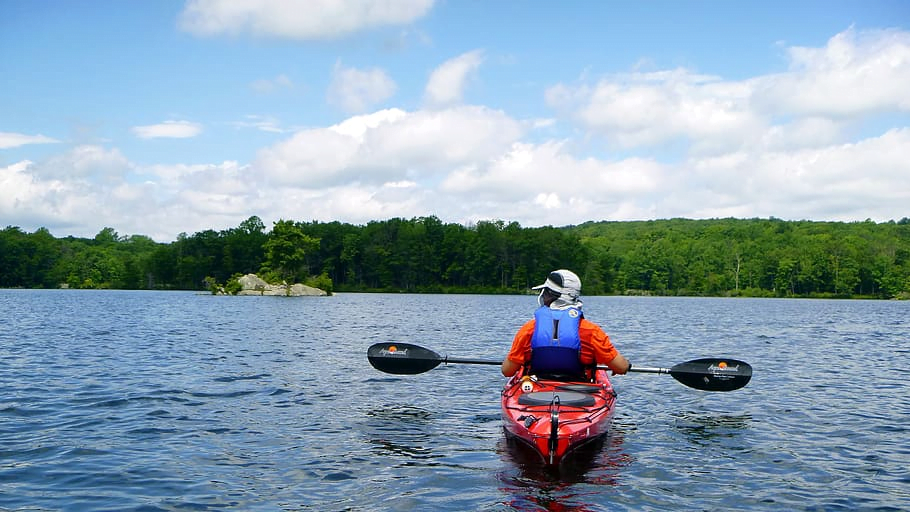
How To Successfully Paddle a 2-Person Kayak Solo?
Taking on a best 2-person inflatable kayak solo might sound tricky, but it’s definitely doable with the right approach! It’s all about how you prepare, balance, and navigate. Let’s explore the key steps to make your solo journey in an inflatable kayak a success.
It gives you the chance to enjoy the water at your own pace, but it does require some adjustments to ensure a smooth ride. Here are the steps to help you paddle successfully:
Step 1: Adjust the Seating Position
- Where should one person sit in a two-person kayak? Well, The seat position affects how the kayak handles in the water. Moving the seat to the middle can help balance the kayak better.
- If the kayak allows, adjust the seat towards the center. This makes it easier to control and keeps the kayak stable.
Step 2: Balance the Kayak with Weight
- Balancing the kayak is crucial, especially if you can’t move the seat. Placing weight in the front helps mimic the presence of a second paddler.
- Use bags filled with water or gear to add weight. Make sure it’s secured and evenly distributed.
Step 3: Use the Right Paddling Technique
- Paddling an inflatable kayak alone requires a bit more effort. Keep your strokes smooth and consistent to maintain control.
- How To Paddle a Two-Person Kayak by One-Person? Practice using a longer paddle if available, as it can help compensate for the kayak’s extra width.
Step 4: Plan Your Route Carefully
- Solo paddling means you should plan your route with more care. Consider the wind, current, and your own stamina.
- Choose calm waters and avoid challenging routes that are better suited for two paddlers.
Step 5: Stay Near the Shoreline
- Staying close to the shore allows for quick exits if needed and makes it easier to manage the kayak.
- It’s also safer, especially if you encounter unexpected issues.
Step 6: Prepare for Emergencies
- Always wear a life jacket, no matter how confident you feel. Bring a whistle, water, and a waterproof bag with essentials.
- Inform someone about your trip plan and expected return time for added safety.
Paddling a 2-person kayak solo isn’t just about the challenge; it’s about enjoying the serenity of the water on your own terms. With these steps, you can make your solo kayaking experience both enjoyable and safe.
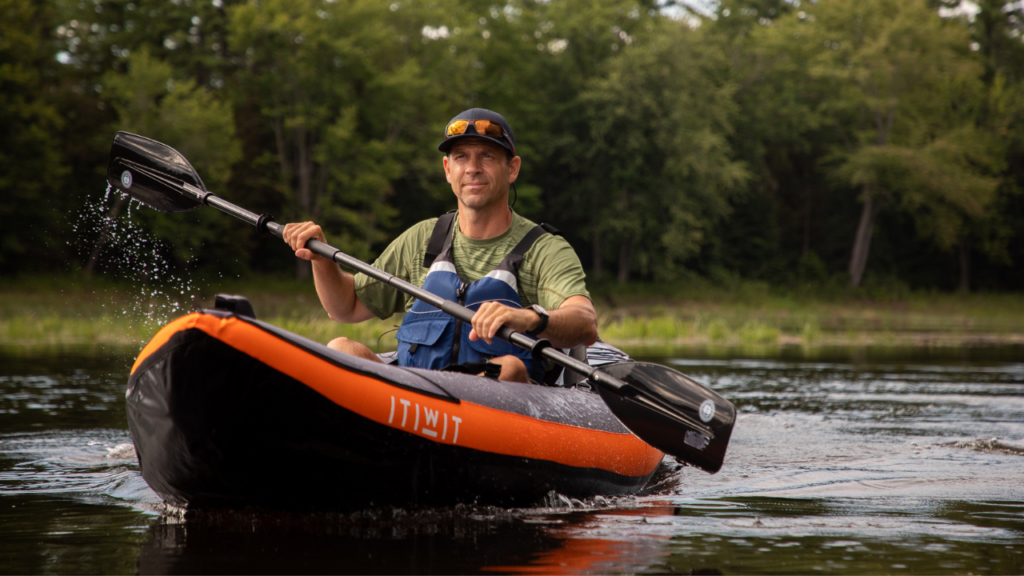
Solo Paddling In An Inflatable Kayak: Pros And Cons
It’s an adventure worth considering! But like any solo trip, it comes with its ups and downs. Let’s dive into the pros and cons of solo paddling in an 2 Person Kayak inflatable kayak.
Pros:
- Light and Easy to Transport: Inflatable kayaks are super light. You can easily carry one by yourself and set it up in no time.
- Stability: These kayaks are stable on water, making them great for beginners or those a bit nervous about tipping over.
- Comfort: With adjustable seats, you can make your solo journey as comfy as you like. Stretch your legs and enjoy the ride!
- Space for Gear: Going alone means extra space for snacks, gear, or even a furry friend. Pack what you need without worrying about space.
- Freedom to Explore: Solo means going where you want, when you want. Explore those quiet coves or linger in peaceful spots without compromise.
- Skill Building: Paddling alone challenges you to become a better navigator and strengthens your kayaking skills.
Cons:
- Safety: Solo trips mean you’ve got to be extra cautious. There’s no one immediately there to help if you get into trouble.
- Loneliness: It can get a bit lonely out there by yourself, especially on longer trips. Missing the chatter can be a downside for some.
- Handling in Wind and Currents: Solo paddlers might find it tougher to control the kayak in strong winds or currents since inflatable kayaks are lighter and can be harder to steer alone.
Paddling solo in an inflatable kayak is an adventure that brings freedom and challenges.
Selecting the Right Inflatable Kayaks for Solo Use
Choosing the right inflatable kayak for solo adventures is crucial for a good time on the water. Here’s how to pick the best one for you.
Finding the perfect inflatable kayak for solo paddling means considering a few key features. These will ensure the kayak performs well when you’re out on the water by yourself.
- Adjustable Seats: Look for kayaks with seats that can be moved or removed. This lets you position yourself in the kayak’s center for better balance and control.
- Lightweight Design: A lighter kayak is easier to transport and maneuver when you’re paddling alone. It makes getting in and out of the water a breeze.
- Storage Space: More room for gear is always a plus. Make sure there’s enough space for all your essentials, especially on longer trips.
- Stability: A stable kayak will make your solo paddling more enjoyable and less worrisome. It’s important for both beginners and experienced paddlers.
This way, you can enjoy the best of both worlds: the space and comfort of a tandem kayak with the freedom of paddling solo.
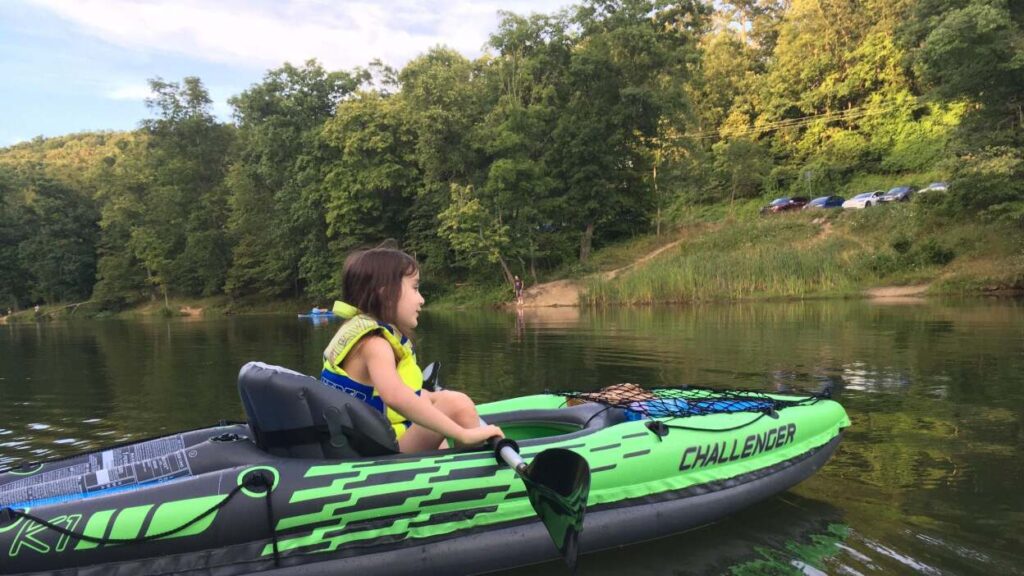
Safety Measures for Solo Paddlers in Inflatable Kayaks
When you’re out on the water alone in an inflatable kayak, staying safe is super important. Let’s look at the top safety measures every solo paddler should follow to ensure a fun and secure adventure.
Paddling solo means you have to be extra careful to keep your kayaking trip safe and enjoyable. Here are essential safety measures:
- Always Wear a Life Jacket: No matter how good of a swimmer you are, a life jacket is a must. It keeps you afloat if you fall in the water.
- Bring Communication Devices: Have a way to call for help. A waterproof phone case or a whistle can be life-savers in emergencies.
- Check the Weather Before You Go: Weather can change quickly. Always look at the forecast to avoid getting caught in bad weather.
- Inform Someone of Your Plan: Tell a friend or family member where you’re going and when you expect to be back. This way, someone knows to check on you if you’re late.
- Pack Emergency Gear: Carry a small, waterproof bag with essentials like water, snacks, a first-aid kit, and a flashlight.
- Stay Close to Shore: Paddling near the shore means you can quickly get to safety if needed. It’s also easier for others to see and help you if you have trouble.
By following these safety measures, solo paddlers in inflatable kayaks can enjoy a safe journey, knowing they’re prepared for the unexpected.
Final Thoughts
Solo paddling in a two-person inflatable kayak can be a rewarding experience, but it requires proper preparation and precautions. By following the tips on adjusting the seating, distributing weight, and adhering to safety measures, you can successfully and safely enjoy the adventure of using a two-person inflatable kayak by yourself.
FAQs
Yes, one person can paddle a two-person kayak. It requires adjusting the seating for balance and may need extra effort to maneuver and control.
Absolutely. Handling a two-person kayak solo involves strategic weight distribution and seat adjustment. It’s manageable with proper technique and a bit of practice.
Yes, you can kayak alone. Solo kayaking offers freedom and tranquility but requires preparation, such as checking weather conditions and informing others of your plans.

